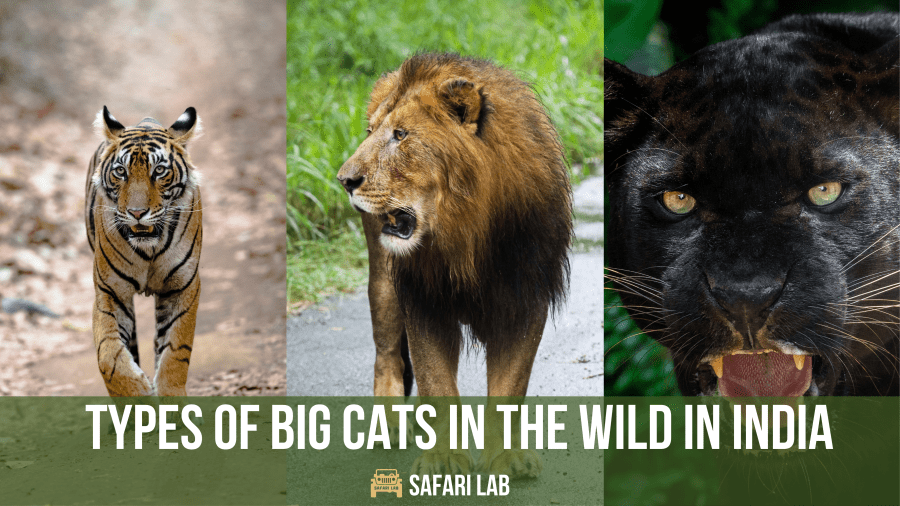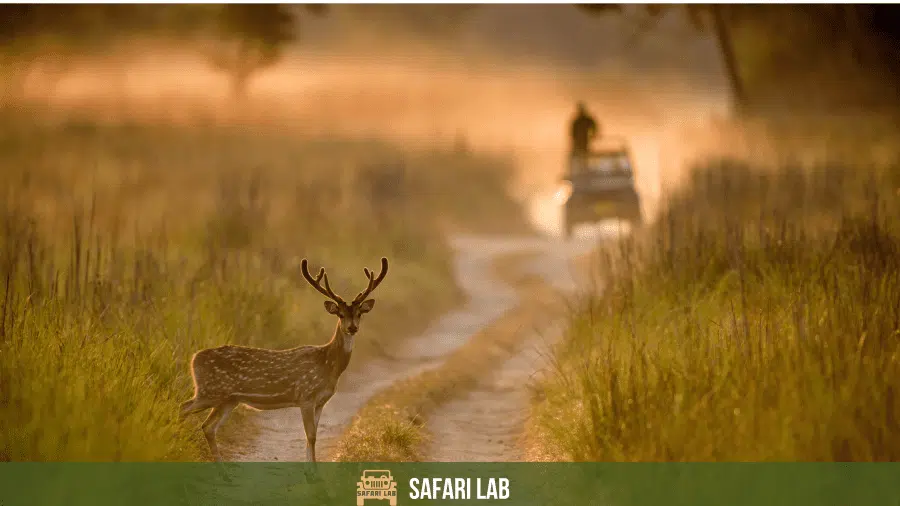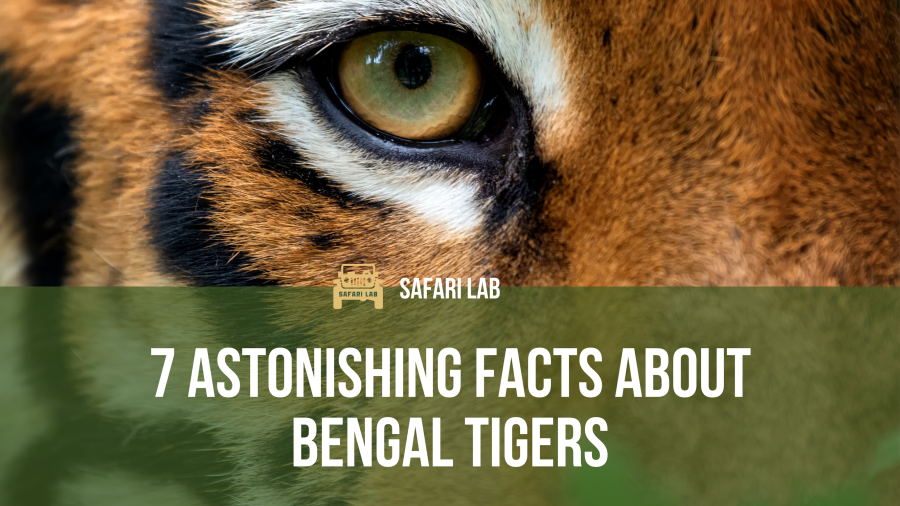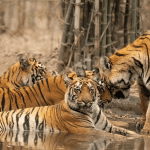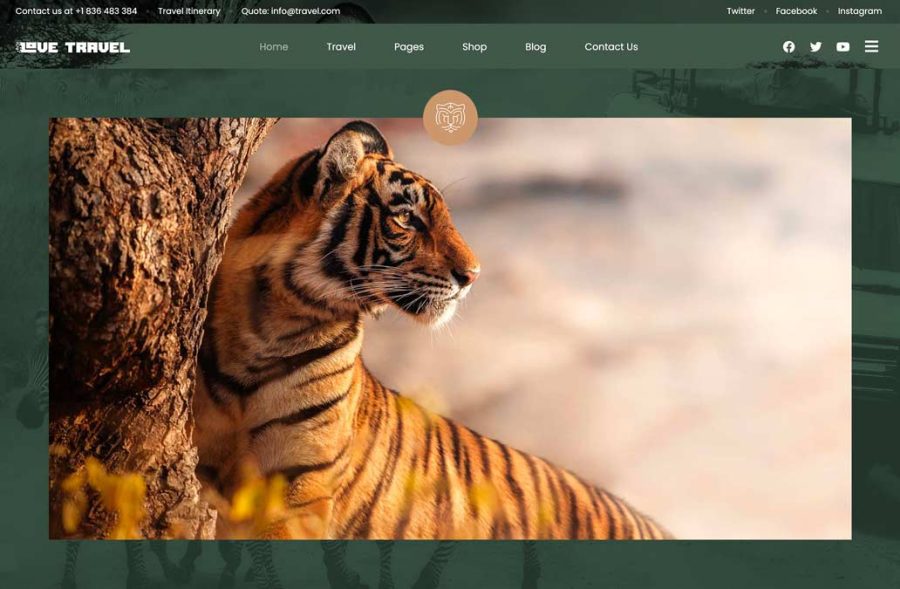India is a country known for its vibrant culture, rich history, and diverse wildlife, underscored by the big cats in India. When it comes to big cats, India is home to some of the most iconic and majestic species in the world. From the royal Asiatic lion to the elusive snow leopard, these big cats hold a special place in the hearts of many wildlife enthusiasts.
This guide will take you on a journey through the different types of big cats found in India. You’ll learn about their habitats, behaviors, and current conservation status. Join us as we explore the fascinating world of Indian big cat species and discover why they are so important to the Indian ecosystem.
Jump To
ToggleKey Takeaways:
- India is home to a diverse range of big cat species, each with their unique characteristics and adaptations.
- The most well-known Indian big cat species include the Bengal tiger, Indian lion, and Indian leopard.
- All big cat species in India face common threats, such as habitat loss and poaching.
- Conservation efforts are crucial for protecting these majestic animals and promoting coexistence between humans and big cats.
- Education is essential for raising awareness about Indian big cat species and fostering a culture of conservation.
Bengal Tiger – India’s Iconic Big Cat
The Bengal tiger is a majestic creature and one of the most recognizable big cats in India. Known for its distinctive orange coat with black stripes, the Bengal tiger is an impressive sight to behold.
These Indian big cat species have a wide range of habitats, from dense forests to grasslands, making them highly adaptable to various environments.
Unfortunately, the Bengal tiger is also one of the most endangered big cats in the world, with only an estimated 2500 individuals left in the wild. Factors such as habitat loss, poaching, and human-wildlife conflict have contributed to their declining population.
Despite these challenges, there are ongoing efforts to conserve this iconic species in India. One such initiative is Project Tiger, which aims to protect and increase the population of Bengal tigers by preserving their natural habitats and preventing poaching.
Bengal Tiger Facts:
| Habitat: | Dense forests, grasslands, and savannas |
|---|---|
| Diet: | Deer, wild boar, and other ungulates |
| Population: | Estimated 2500 individuals left in the wild |
| Conservation Status: | Endangered |
“The Bengal tiger is a symbol of India’s rich wildlife heritage, and its conservation is crucial not just for their survival, but also for the preservation of biodiversity as a whole.” – Wildlife Trust of India
Indian Lion – Royalty of the Wildlife
The Indian lion, also known as the Asiatic lion, is a majestic big cat species found exclusively in the Gir Forest of Gujarat, India. These lions are a symbol of royalty and strength, and have been a part of Indian culture and mythology for centuries.
Indian lions have a distinctive appearance with a shaggy mane surrounding the male lion’s head. They are slightly smaller in size compared to their African cousins, but are just as powerful and agile. Their habitat consists of dry deciduous forests, scrub, and open grasslands, which provide them with ample opportunities to hunt their prey.
Unfortunately, the Indian lion population has faced numerous threats and challenges over the years, including habitat loss and poaching. Due to these factors, the Indian lion was on the brink of extinction, with only a handful of individuals remaining in the early 20th century.
| Location | Number of lions (2020) |
|---|---|
| Gir National Park | 674 |
| Barda Wildlife Sanctuary | 55 |
| Girnar Wildlife Sanctuary | 17 |
| Pania Wildlife Sanctuary | 9 |
Thanks to rigorous conservation efforts, the Indian lion population has made a remarkable recovery, with the latest census reporting a population of over 674 individuals in 2020. The government, along with various non-profit organizations, has implemented measures such as habitat restoration, anti-poaching patrols, and community-based conservation programs to ensure the survival of this iconic species.
Despite these positive developments, there is still much work to be done to protect the Indian lion and its habitat. Continuing conservation efforts and education to promote coexistence with these majestic creatures is crucial to their survival and the delicate balance of the ecosystem they inhabit.
“The Indian lion is not just an animal, it is a symbol of our national heritage and pride. We must do everything in our power to protect this magnificent creature and ensure its survival for generations to come.” – Indian Prime Minister Narendra Modi
Indian Leopard – The Stealthy Stalker
The Indian leopard, a graceful member of the Indian big cat species, is widely recognized for its incredible adaptability and has managed to survive in a variety of habitats across India, ranging from the subtropical forests of the Himalayas to the scrublands of the Thar Desert.
With its keen senses and stealthy movements, the Indian leopard is a fierce and effective hunter, preying on a variety of animals, from monkeys to deer. Its hunting technique consists of patiently stalking its prey before proceeding to a sudden ambush, making it an efficient and dangerous predator.
Despite its remarkable survival skills, the Indian leopard faces a range of conservation challenges. Habitat loss due to human encroachment, poaching for its valuable skin and body parts, and conflict with humans are some of the major threats to this magnificent animal.
| Indian Leopard | Facts |
|---|---|
| Average weight | 60-70 kg |
| Average length | 4-5 ft (body), 2-3 ft (tail) |
| Habitat | Forests, grasslands, deserts, mountains |
| Conservation Status | Near Threatened |
Efforts are underway to protect the Indian leopard through various conservation programs, including anti-poaching initiatives, habitat preservation, and reducing human-wildlife conflict. Additionally, raising awareness and educating the public about the importance of this species is essential to ensure its long-term survival.
To see the beauty and stealth of the Indian leopard in action, check out this mesmerizing image:

“The Indian leopard, with its remarkable adaptability and impressive hunting skills, is a true symbol of India’s rich and diverse wildlife.”
Clouded Leopard – The Phantom of the Forest
Among the Indian big cat species, the clouded leopard is undoubtedly one of the most elusive and mysterious. These felines are known for their unique physical features, including their long tails, big paws, and striking black and brown spotted coats. They are also highly adaptable, living in a range of habitats from tropical forests to high-altitude regions.
Despite their widespread distribution, little is known about the population size and conservation status of clouded leopards in India. According to recent estimates, fewer than 10,000 clouded leopards survive in the wild globally, with the species listed as vulnerable on the IUCN Red List of Threatened Species.
Clouded leopards face numerous threats in India, including habitat loss due to deforestation, hunting for their pelts or bones, and poaching for the illegal wildlife trade. To improve the conservation status of these elusive felines, various organizations and wildlife conservation authorities in India are taking steps to protect their habitat, raise awareness among communities, and strengthen law enforcement against poachers.
“The clouded leopard’s grace and beauty are truly captivating. We must do all we can to protect and conserve this species before it’s too late.”
Snow Leopard – The Ghost of the Mountains
The snow leopard is a majestic big cat species that inhabits the harsh terrain of the Himalayas, the Karakoram Range, and other high-altitude regions in India. These elusive creatures are known for their striking appearance, which features thick fur, rosette-shaped spots, and a long tail that helps them balance on rocky terrain.
The snow leopard’s unique adaptations enable it to thrive in extreme environments where other predators cannot survive. They have a stocky build that keeps them warm in frigid temperatures, and their large paws help distribute their weight on soft snow. These adaptations make them highly skilled hunters, capable of stalking and taking down agile prey such as blue sheep and ibex.
Despite their impressive skills, snow leopards face numerous threats, including loss of habitat, prey depletion, and poaching. In India, conservationists have implemented various measures to mitigate these risks and protect the species. The Indian government has established protected areas, such as Hemis National Park and Khangchendzonga National Park, to provide a safe haven for snow leopards. Additionally, local communities have been educated about the importance of conserving snow leopards, which has led to a reduction in poaching.
“The snow leopard is an important symbol of India’s commitment to wildlife conservation. Efforts are underway to ensure that these magnificent creatures continue to exist in the wild for future generations to appreciate.” – Peter Matthiessen
Snow Leopard Population in India
The population of snow leopards in India is estimated to be around 600 individuals. This is an encouraging increase from the 200-400 individuals estimated in the 1990s. However, these numbers are still relatively low, and the species remains endangered. To further protect the snow leopard population in India, conservationists are working to establish a corridor connecting their habitats to facilitate breeding and improve genetic diversity.
Snow Leopard Conservation Organizations in India
| Organization Name | Location | Mission |
|---|---|---|
| Snow Leopard Trust India | Leh, Jammu, and Kashmir | To protect the snow leopard and its habitat through scientific research, community programs, and education. |
| Nature Conservation Foundation | Mysuru, Karnataka | To promote the conservation of endangered wildlife species, such as the snow leopard, through research, training, and advocacy. |
| Wildlife Conservation Society India | Bengaluru, Karnataka | To conserve India’s biodiversity through research, education, and conservation efforts, including those focused on snow leopards. |
By supporting these organizations and their initiatives, individuals can contribute to snow leopard conservation efforts in India, preserving this iconic species for future generations to come.
Asiatic Lion – Pride of Gujarat
The Asiatic lion is a subspecies of the lion found only in the Gir Forest of Gujarat, India. This majestic big cat has been an integral part of Indian culture and tradition for centuries, and it holds immense significance in the country’s biodiversity. With a mere population of about 500 individuals in the wild, the Asiatic lion is classified as an endangered species and is under constant threat.
The Gir Forest is the last remaining stronghold of the Asiatic lion, and it provides the perfect habitat for this big cat species. The forest is a mix of seasonal and deciduous trees, with ample prey and water sources available for the lions.
Despite being a protected species, the Asiatic lion faces numerous threats, mainly poaching, habitat loss, and human-wildlife conflict. To combat these issues, the Indian government has implemented several conservation measures, including the relocation of human settlements from the vicinity of the Gir Forest and the establishment of a dedicated task force to monitor and protect the lion population. The efforts have resulted in a stable increase in the lion population over recent years, prompting hopes for their long-term survival in the wild.
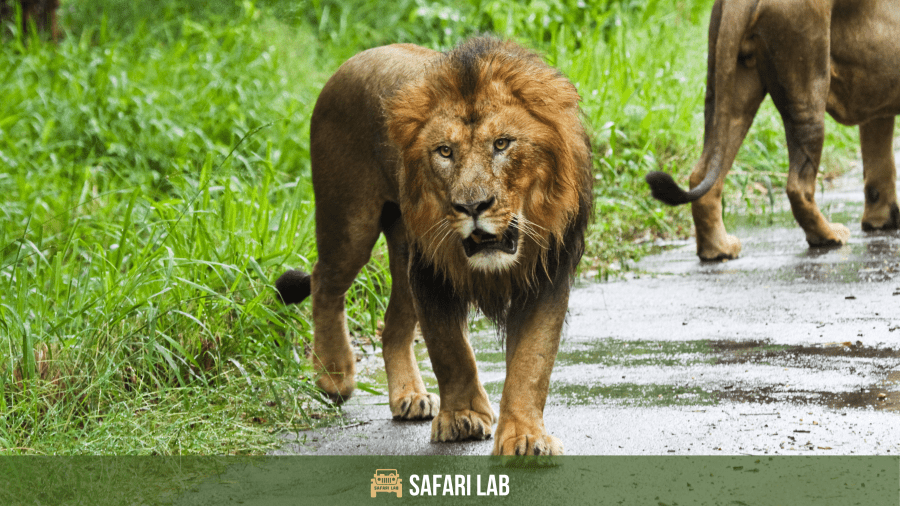
“The Asiatic lion is an endemic species of India and a symbol of the country’s rich biodiversity. It is our responsibility to protect and conserve this magnificent big cat for future generations.” – Wildlife Conservation Expert
Indian Cheetah – A Lost Icon
The Indian cheetah, also known as the Asiatic cheetah, was once widely found in the Indian subcontinent but sadly went extinct in the country in the 1950s. While there are still a few hundred Asiatic cheetahs alive in Iran, the Indian population could not survive the pressures of habitat loss, hunting, and poaching. It is a tragic loss for the Indian big cat species and a reminder of the precarious state of many big cat populations.
The Indian cheetah was a unique subspecies of cheetah, adapted to the varied ecosystems of India, from grasslands to deserts. Its slender body and long legs made it the fastest land animal, capable of running up to 70 miles per hour. In India, the royal courts used to keep cheetahs as hunting companions, reflecting the cultural significance of the species to the Indian society.
Reasons for the extinction of Indian cheetahs range from hunting and poaching to habitat loss due to human activity, such as intensive agriculture, mining, and urbanization. It’s important to note that the Indian cheetah’s extinction was not a natural but a human-made tragedy.
“The Indian cheetah’s extinction is a sobering reminder of how we humans can impact a species’ survival. We need to acknowledge our impact and redouble our conservation efforts to save as many unique and threatened species as possible.”
Potential conservation efforts for the reintroduction of Indian cheetahs include translocation from Iran and selective breeding programs. The Indian government has been exploring ways to bring back the cheetah to India, including reintroducing it in the Kuno-Palpur Wildlife Sanctuary in Madhya Pradesh. However, these efforts come with their own set of challenges and controversies, such as genetic compatibility and habitat suitability.
The Indian cheetah, while lost, holds a special place in the Indian wildlife lexicon, signaling the importance of conserving and protecting the remaining big cat species. To do so, we must acknowledge our role in the present situation and take measures to protect and recover endangered species so that they can thrive in their native habitats for generations to come.
The Common Factors – Threats and Conservation
All Indian big cat species, including Indian wild cats, face common threats that jeopardize their survival. Habitat loss, poaching, and human-wildlife conflict are the primary challenges that big cats encounter in India.
Threats to big cat species have arisen mainly due to the increasing human population and agricultural activities which have led to a reduction in the prey base and fragmentation of habitats.
Poaching of big cats and their prey is yet another significant threat to their survival. These activities are often driven by illegal trade syndicates that cater to international demand for their body parts and products.
“The demand for skins, bones, and other body parts of big cats in East and Southeast Asian countries is the primary driver of the illegal wildlife trade.”
Conservation of big cats is critical to prevent their extinction. Several organizations and governments have been working towards their protection.
The Indian government has implemented several conservation programs, including Project Tiger and Project Elephant, to conserve big cat species and their habitats. Additionally, various non-governmental organizations, such as the Wildlife Conservation Society and WWF-India, are also actively involved in the conservation of Indian wild cats.
One successful conservation program in India is the Gir Lion Project, which has spearheaded the conservation of the Asiatic lion, retaining the population in the country’s only natural habitat, Gir National Park. The project has been instrumental in the successful recovery of India’s most endangered big cat species.
The conservation efforts also extend to raising public awareness about the threats faced by big cat species and the need to protect them. Education and awareness campaigns have been initiated to sensitise people towards big cat conservation and promote coexistence.
Future Prospects – Coexistence and Education
Coexisting with Indian big cat species is crucial for their survival. Education about these magnificent animals is the first step towards achieving this goal. When humans learn to live in harmony with these wild cats, it not only helps in their preservation but also promotes a positive ecosystem balance in India.
Human activities such as deforestation, pollution, and encroachment on wildlife habitats, pose significant threats to Indian big cat species such as the Bengal tiger and Indian leopard. We must learn to mitigate these problems by creating awareness among local communities.
“Education is the most powerful weapon which you can use to change the world.” – Nelson Mandela
Educating communities about the importance of these wild cats can lead to positive action and changes in behavior. Schools and colleges can play a vital role in teaching students about Indian wild cats and their conservation. It can help in creating an informed and responsible generation for the future.
| Ways to promote coexistence and education: |
|---|
| Organizing awareness programs about big cat species in India in local communities |
| Encouraging eco-tourism to bring awareness and increase revenue for conservation efforts |
| Enforcing strict protection laws and penalties against poaching and illegal trade of big cat species in India |
| Establishing conservation facilities for big cat species in India |
| Collaborating with NGOs, governments and local communities for big cat conservation activities in India |
The future of Indian big cat species depends on coexisting and educating humans. It is essential to preserve and protect these majestic animals for future generations.
Conclusion:
In conclusion, India is home to a diverse range of big cat species, including the iconic Bengal tiger, the majestic Indian lion, the stealthy Indian leopard, the elusive clouded leopard, the enigmatic snow leopard, and the extinct Indian cheetah. Despite facing numerous threats such as habitat loss and poaching, these big cats are being protected and conserved through the efforts of various organizations and conservation initiatives. It is crucial to educate the public about these species and encourage coexistence between humans and big cats. Only through collective efforts can we ensure the survival of these magnificent animals for future generations to admire and appreciate. Let us all work together to protect and conserve India’s wild cats!
FAQ
What are the different types of big cats found in India?
The different types of big cats found in India include the Bengal tiger, Indian lion, Indian leopard, clouded leopard, snow leopard, asiatic lion, and the now-extinct Indian cheetah.
What is the most iconic big cat in India?
The Bengal tiger is considered the most iconic big cat in India. It is known for its majestic appearance and powerful presence.
What is the Indian lion also known as?
The Indian lion is also known as the Asiatic lion. It is a subspecies of lion found only in the Gir Forest of Gujarat, India.
What are some characteristics of the Indian leopard?
The Indian leopard is known for its stealth and adaptability. It is an expert climber and can be found in a variety of habitats across India.
What is unique about the clouded leopard?
The clouded leopard, often called the “phantom of the forest,” is known for its striking cloud-like markings on its fur. It is an elusive and secretive creature.
Where can the snow leopard be found in India?
The snow leopard is primarily found in the mountainous regions of northern India. It is specially adapted to survive in high-altitude environments.
What makes the Asiatic lion special?
The Asiatic lion is one of the rarest big cats in the world and is found only in the Gir Forest of Gujarat, India. It is a symbol of pride and importance for Indian wildlife conservation.
Why did the Indian cheetah go extinct?
The Indian cheetah went extinct in India mainly due to habitat loss and excessive hunting. Efforts are being made to potentially reintroduce the species in the future.
What are the common threats faced by big cats in India?
Big cats in India face common threats such as habitat loss, poaching for their body parts, and human-wildlife conflict.
How can coexistence with big cats be promoted in India?
Coexistence with big cats in India can be promoted through measures such as creating protected areas, implementing sustainable livelihood options for local communities, and raising awareness about the importance of these animals.
What is the importance of educating the public about big cats?
Educating the public about big cats plays a crucial role in promoting conservation efforts. It helps foster a greater understanding of these species and their ecological significance.
Recent Posts
Archives
Categories
Customized Trip Form
Author

Sanjay Nair is a multi-award-winning wildlife photographer, conservation storyteller, and co-founder of Safari Lab. With over 15 years of fieldwork and a Nature in Focus award under his belt, Sanjay’s photographs and stories have been published in global outlets such as The Times & The Guardian.
View all posts

